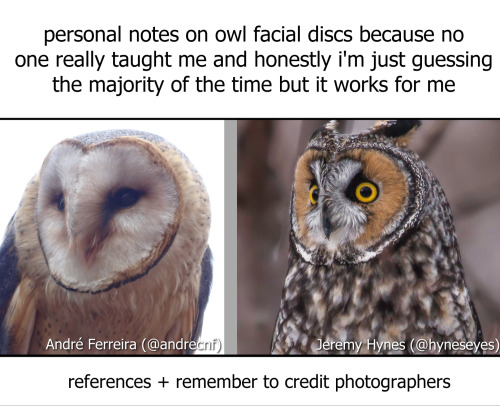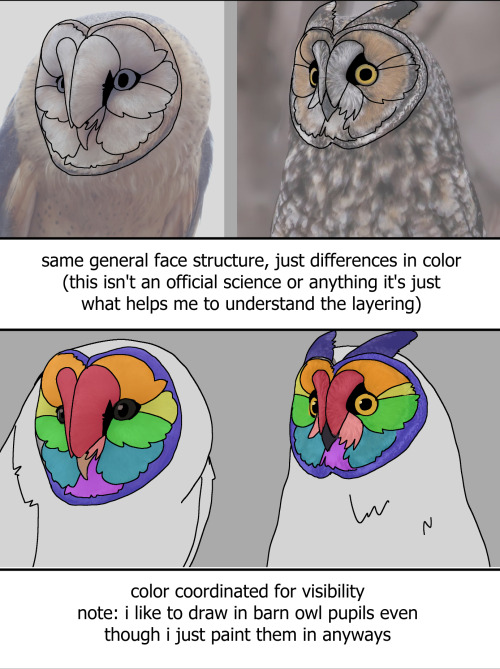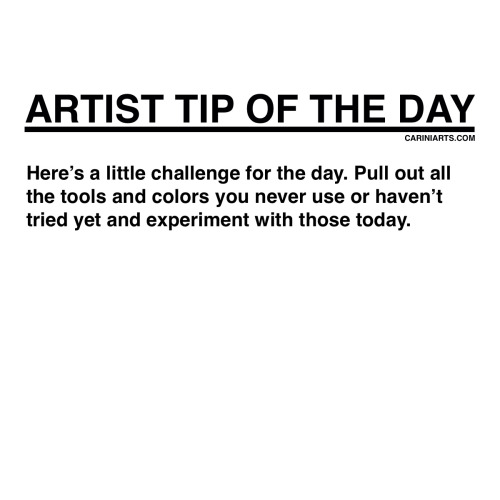Did A Quick Colouring Tutorial For Someone So Dropping It Here



did a quick colouring tutorial for someone so dropping it here
More Posts from Donutdomain and Others


Some people asked how I paint hair, so I made this very simplified explanation, but I hope it helps someone.
The @ is my twitter btw ^~

“Welcome to Snackbeard’s Sandbar and Krill And Other DelicaSeas and Delights!”
When snacktime beckons in the deep sea, salmon snailfish wiggle wiggle those little chin-fins (which are actually modified pectoral fins) in the sand—but it’s all in good taste. Those whiskers are covered in tastebuds, and can help them sus out small crustaceans, like amphipods and crabs, hidden in the muck!

HiPOD 20 Apr 2022: Recent Gullies in Equatorial Valles Marineris
Although actively-forming gullies are common in the middle latitudes of Mars, there are also pristine-looking gullies in equatorial regions.
In this scene, the gullies have very sharp channels and different colors where the gullies have eroded and deposited material. Over time, the topography becomes smoothed over and the color variations disappear, unless there is recent activity.
Changes have not been visible here from before-and-after images, and maybe such differences are apparent compared to older images, but nobody has done a careful comparison. What may be needed to see subtle changes is a new image that matches the lighting conditions of an older one. Equatorial gully activity is probably much less common—perhaps there is major downslope avalanching every few centuries—so we need to be lucky to see changes.
MRO has now been imaging Mars for over 16 years, and the chance of seeing rare activity increases as the time interval widens between repeat images.
Enhanced color image is less than 1 km across.
ID: ESP_072612_1685 date: 22 January 2022 altitude: 263 km
NASA/JPL-Caltech/UArizona



some vaguely coherent notes on owl facial discs because they were the hardest part of the bird for me to figure out and if this helps at least one person then I consider that an epic win
Photos: Barn Owl, Long-eared Owl

Stars and Dust Across Corona Australis : Cosmic dust clouds cross a rich field of stars in this telescopic vista near the northern boundary of Corona Australis, the Southern Crown. Less than 500 light-years away the dust clouds effectively block light from more distant background stars in the Milky Way. Top to bottom the frame spans about 2 degrees or over 15 light-years at the clouds’ estimated distance. At top right is a group of lovely reflection nebulae cataloged as NGC 6726, 6727, 6729, and IC 4812. A characteristic blue color is produced as light from hot stars is reflected by the cosmic dust. The dust also obscures from view stars in the region still in the process of formation. Just above the bluish reflection nebulae a smaller NGC 6729 surrounds young variable star R Coronae Australis. To its right are telltale reddish arcs and loops identified as Herbig Haro objects associated with energetic newborn stars. Magnificent globular star cluster NGC 6723 is at bottom left in the frame. Though NGC 6723 appears to be part of the group, its ancient stars actually lie nearly 30,000 light-years away, far beyond the young stars of the Corona Australis dust clouds. via NASA
I knew that the eruption/explosion of Krakatoa was the loudest sound in recorded history, but I couldn’t quite grasp how loud until I got a couple details of perspective. This was in 1883.
The shock wave ruptured the eardrums of sailors 40 miles away.
The explosion was heard more than 3,000 miles away, and recorded all over the world.
It made tsunamis nearly 100 feet high.
Now picture this happening in modern times, with modern communications. Not only would there be uncountable videos and whatnot, but the timing is what really gets me. Imagine you’re going about your day, scrolling social media, and posts start pouring in about an apocalyptic volcano on the other side of the continent. The news are full of it. You spend ages glued to the screen; this isn’t remotely close to you, but it’s a big deal, and you know people who live closer to it.
Three hours later, something explodes outside. Propane tank? Car fire? Some jackass with illegal firecrackers?
Nope. That was the sound wave, finally reaching you.
HOW DO YOU SHADE THE GOLD PARTSS???? PSLSPSLPSLPSLS

You don't have to take my word as gospel but these are the things I found that work well: ♡
(Please excuse grammatical errors I wrote this with a headache-...)
In my personal experience and process with gold, I find that these few things help me a lot when tackling it:
-whenever you approach gold it's important to asses the medium in which the material presents itself. The two options are the metal itself and any type of golden fabric.
-the shading process for me begins right from the sketch, when mapping out the gold accessory, object or the accent on a piece of clothing I try to get the shape of it to make sense.


It's most important, with golden fabric, to know and imagine how it falls arround and wraps arround a silhouette or body parts, if you want to figure out shading.
-So, when we speak "golden clothing" it revolves arround very sharp shadows, lights and reflections mainly becouse of fabric wrinkles. Golden clothing is pretty easy once you understand the nature of your material-☆
And the rules apply to any other colour!


Original Yellow hue
♡Same rules apply♡
So if you want you can structure your lights and shadows in black, white and grey! It works well to start off if you're not confident with colours as gold can be tricky in that regard...
GREYSCALE- can help you better understand the intensity of lights and shadows in contrast with one another:

You can then focus on colour later after you set up your values.

You'll notice with gold pieces that are much less clothing and much more metal the shadows alter from soft to sharp depending on the physical structure of the object itself.
If you encounter smooth curves it's soft, when it's sudden cuts or edges it's sharp.
Important to keep in mind:
-Gold is a metal = metals are REFLECTIVE.

Metals will reflect light aswell as colours.
They will especially reflect ☆colorful lights.☆
You must always, always, know where the light source is, and how it hits the object/ material.
That's it for now but if you want a more detailed step by step process just ask ^^☆
-Nix🌙
-
 xbluebloodberryx liked this · 1 year ago
xbluebloodberryx liked this · 1 year ago -
 pofumero liked this · 2 years ago
pofumero liked this · 2 years ago -
 timdrakecaffeineshakes liked this · 2 years ago
timdrakecaffeineshakes liked this · 2 years ago -
 mammonsmaid liked this · 2 years ago
mammonsmaid liked this · 2 years ago -
 gingerjuice reblogged this · 2 years ago
gingerjuice reblogged this · 2 years ago -
 gingerjuice liked this · 2 years ago
gingerjuice liked this · 2 years ago -
 idonthaveanyfucks liked this · 2 years ago
idonthaveanyfucks liked this · 2 years ago -
 bl00000g liked this · 2 years ago
bl00000g liked this · 2 years ago -
 misc-midnights-miscellany reblogged this · 2 years ago
misc-midnights-miscellany reblogged this · 2 years ago -
 misc-midnights-miscellany liked this · 2 years ago
misc-midnights-miscellany liked this · 2 years ago -
 strkid liked this · 2 years ago
strkid liked this · 2 years ago -
 surimeve liked this · 2 years ago
surimeve liked this · 2 years ago -
 fas1105 liked this · 2 years ago
fas1105 liked this · 2 years ago -
 donutdomain reblogged this · 2 years ago
donutdomain reblogged this · 2 years ago -
 fairydonut549 liked this · 2 years ago
fairydonut549 liked this · 2 years ago -
 noritaro liked this · 2 years ago
noritaro liked this · 2 years ago -
 karmanella liked this · 2 years ago
karmanella liked this · 2 years ago -
 tea2go liked this · 2 years ago
tea2go liked this · 2 years ago -
 meowsod liked this · 2 years ago
meowsod liked this · 2 years ago -
 annadanil890 liked this · 3 years ago
annadanil890 liked this · 3 years ago -
 blue-ells liked this · 3 years ago
blue-ells liked this · 3 years ago -
 alexisjolynn liked this · 3 years ago
alexisjolynn liked this · 3 years ago -
 elbert89 liked this · 3 years ago
elbert89 liked this · 3 years ago -
 ricerobot liked this · 3 years ago
ricerobot liked this · 3 years ago -
 prettysugarandthespacepirates liked this · 3 years ago
prettysugarandthespacepirates liked this · 3 years ago -
 evana-47 reblogged this · 3 years ago
evana-47 reblogged this · 3 years ago -
 evana-47 liked this · 3 years ago
evana-47 liked this · 3 years ago -
 fantasticbananaphantom liked this · 3 years ago
fantasticbananaphantom liked this · 3 years ago -
 nonbinarywarcriminal liked this · 3 years ago
nonbinarywarcriminal liked this · 3 years ago -
 candykles liked this · 3 years ago
candykles liked this · 3 years ago -
 floof-butt liked this · 3 years ago
floof-butt liked this · 3 years ago -
 theshyowlposts reblogged this · 3 years ago
theshyowlposts reblogged this · 3 years ago -
 theshyowlposts liked this · 3 years ago
theshyowlposts liked this · 3 years ago -
 neg679s liked this · 3 years ago
neg679s liked this · 3 years ago -
 jyrs-kuur liked this · 3 years ago
jyrs-kuur liked this · 3 years ago -
 spider-gets-inspired reblogged this · 3 years ago
spider-gets-inspired reblogged this · 3 years ago -
 mr-recyclable-trash-bag liked this · 3 years ago
mr-recyclable-trash-bag liked this · 3 years ago -
 maraarcanum reblogged this · 3 years ago
maraarcanum reblogged this · 3 years ago -
 anishiftan203 liked this · 3 years ago
anishiftan203 liked this · 3 years ago -
 totoros-booty liked this · 3 years ago
totoros-booty liked this · 3 years ago -
 2percentmilkman liked this · 3 years ago
2percentmilkman liked this · 3 years ago -
 mautts-recluse liked this · 3 years ago
mautts-recluse liked this · 3 years ago -
 artinscollective reblogged this · 3 years ago
artinscollective reblogged this · 3 years ago -
 luciaslullaby liked this · 3 years ago
luciaslullaby liked this · 3 years ago -
 yoiloveyosstuff liked this · 3 years ago
yoiloveyosstuff liked this · 3 years ago -
 ammomancer liked this · 3 years ago
ammomancer liked this · 3 years ago

I just reblog fun facts/tipsScience, nature, geology facts etc! + art & writing tips!
67 posts
